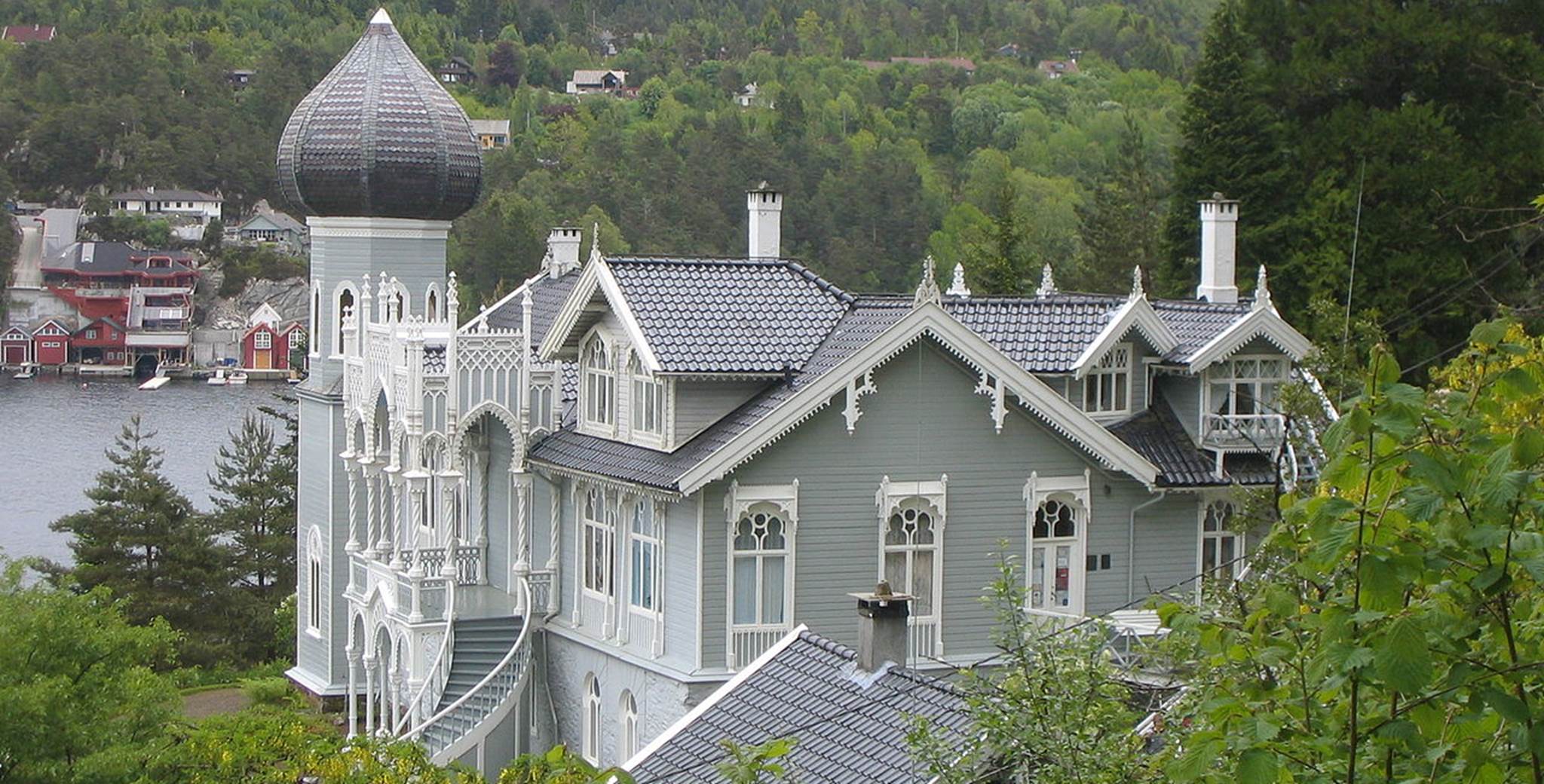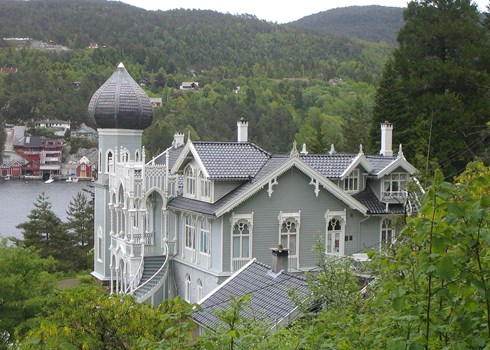

Lyskloster, Hordaland (Vestland)
Owned by the National Trust of Norway since 1973, when Ole Bull’s granddaughter Sylvea Bull Curtis gifted Lysøen to the Hordaland branch of the National Trust in 1973.
From summer home to Ole Bull Museum Lysøen. In spring 1872, Ole Bull was 62 years old and looking for a summer home in Norway for himself, his new American wife and their young daughter Olea. He bought ‘the farm Lysøen’, which had been a tenant farm under Lysekloster since the late 17th century. Ole Bull chose to leave the old houses on the farm as they were and had a unique villa built further south on the island.
Bull’s own design. The fairy-tale villa with towers and columns was allegedly built to drawings by Bull himself under the careful eye of architect Conrad Fredrik von der Lippe. The villa, which contains a music hall with a high ceiling, was ready in spring 1873. Ole Bull then started drawing a map of the island with quays, roads, a bathing hut, summerhouse, waterlily ponds and orchards. This work continued after Bull’s death in 1880.
Year-round home. Around 1905–1906, another generation took over the reins at Lysøen. The villa was gradually modified into a year-round home. The standard of the house was improved through extensive work and redecoration, but the important rooms were largely kept as they were in Ole Bull's time. Lysøen was given museum status in 1984, and is today part of the KODE Art Museums and Composer Homes.
Things to do in the area. Lysøen offers lovely walking and bathing opportunities. There is a small café in an adjacent house that was used as servants’ quarters in Ole Bull's time. Os also boasts a range of traditional craft experiences, nature and culture experiences ranging from Lysekloster monastery ruins and Oseana Art and Culture Centre to Économuseé Oselvarverkstaden, where you can learn about how traditional Oselvar boats are built. Visit Os
Sources: En reise gjennom norsk byggekunst, ed. Terje Forseth. National Trust of Norway, 1994. /www.lysoen.no
Opening hours
- Villa Lysøen is under restoration, and is closed for the public. The island of Lysøen can be visited in the summerseason (18.05 – 15.09) by shuttleboat from Buena dock to Lysøen island: Sundays 11.00 – 16.30
Ticket prices
Visit us
Museet Lysøen5215 Lysekloster
Ole Bull Museum Lysøen. Se veibeskrivelse: http://www.lysoen.no
Contact us
- Tlf: 56 30 90 77
- Epost: mail@lysoen.no


